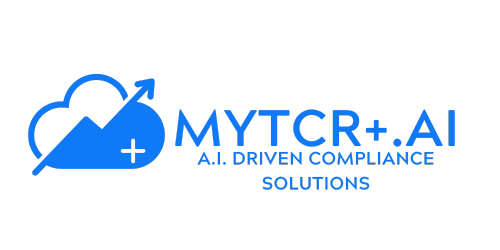When a compliance crisis strikes, organizations find themselves in a pressure cooker situation where every minute counts. Whether it’s a failed audit, a regulatory notice of violation, or the discovery of a critical gap in safety protocols, the need for immediate corrective action becomes paramount. Understanding how to navigate these urgent scenarios effectively can mean the difference between minor penalties and catastrophic consequences that can fundamentally alter an organization’s trajectory.
Compliance emergencies rarely announce themselves with advance warning. They materialize suddenly, often during routine audits or through whistleblower reports, catching even well-prepared organizations off guard. The initial shock of discovering a serious compliance breach can paralyze decision-making just when swift action is most critical. However, organizations that have prepared mentally and procedurally for such scenarios find themselves better equipped to respond decisively when crisis moments arrive.
Understanding the Anatomy of Compliance Emergencies
The first critical step in addressing any compliance emergency is accurate assessment. Panic often leads to hasty decisions that create additional problems rather than solving the original issue. Organizations must quickly gather their compliance team, legal advisors, and relevant department heads to determine the exact nature and scope of the problem. This rapid but thorough evaluation establishes the foundation for an effective response strategy that addresses root causes rather than merely treating symptoms.
During this assessment phase, distinguishing between actual violations and potential violations becomes essential. An actual violation represents a clear breach of regulatory requirements that has already occurred, while a potential violation indicates circumstances that could lead to non-compliance if not corrected. This distinction influences both the urgency of response and the strategy for remediation. Actual violations typically require immediate disclosure to regulators and swift corrective action, whereas potential violations may allow slightly more time for comprehensive solution development.
The scope assessment must consider not just the immediate violation but also its potential ripple effects throughout the organization. A compliance breach in one department may indicate systemic weaknesses that affect other areas as well. For example, discovering improper documentation practices in one facility might suggest training deficiencies or policy gaps that exist across multiple locations. Conducting this broader analysis quickly, without allowing it to delay initial corrective actions, requires skilled judgment and often benefits from external expertise.
Strategic Communication During Crisis
Communication becomes crucial during compliance emergencies, operating on multiple levels simultaneously. Regulatory bodies generally respond more favorably to organizations that demonstrate transparency and a genuine commitment to correction. Promptly notifying the appropriate agencies shows good faith and can sometimes result in reduced penalties or extended correction timelines. The manner of this notification matters tremendously. A well-crafted disclosure acknowledges the problem without making unnecessary admissions of fault, outlines immediate steps being taken, and demonstrates organizational commitment to full remediation.
Internal communication is equally vital, ensuring that all stakeholders understand the situation, their responsibilities, and the urgency of implementation. However, this communication must be carefully calibrated. Sharing too much information too broadly can create confusion and potentially compromise legal strategy, while sharing too little can leave employees unable to respond appropriately. Organizations should establish clear communication protocols that specify who needs what information, when, and through what channels.
The challenge of maintaining confidentiality while ensuring adequate information flow becomes particularly acute during compliance emergencies. Employees directly involved in implementing corrective measures need detailed understanding of the problem and its context, while other personnel may only need to know about specific procedural changes affecting their work. Legal counsel should review communication plans to ensure they protect attorney-client privilege and work product protections while still enabling effective operational response.
External communication extends beyond regulatory notifications to include other stakeholders who may be affected by or interested in the compliance issue. Depending on the nature of the violation, this might include customers, business partners, investors, or the public. These communications require especially careful crafting, balancing transparency with protection of organizational interests. Many compliance emergencies have been exacerbated by poorly handled external communications that either understated the seriousness of issues, creating credibility problems later, or overstated problems, triggering unnecessary alarm.
Implementing Immediate Corrective Actions
Immediate corrective actions often require temporary measures that bridge the gap until permanent solutions can be implemented. These stopgap measures might include enhanced supervision, restricted operations in affected areas, or expedited training programs. While these solutions may not be ideal for long-term operations, they demonstrate proactive risk management and allow business continuity while more comprehensive fixes are developed.
The key to effective interim measures lies in their credibility and enforceability. Announcing heightened supervision means little if adequate supervisory resources are not actually deployed. Similarly, operational restrictions must be genuinely implemented and monitored, not just documented on paper. Regulators and internal stakeholders alike will judge the organization’s sincerity by whether these interim measures actually function as described or merely serve as window dressing for public consumption.
Organizations must resist the temptation to implement overly broad interim restrictions that unnecessarily disrupt operations. While comprehensive restrictions might seem like the safest path during a crisis, they can create secondary problems including lost productivity, employee frustration, and customer dissatisfaction. Surgical, targeted interim measures that address the specific compliance risk without creating excessive collateral disruption demonstrate sophisticated crisis management.
Resource Allocation and Priority Management
Resource allocation during compliance emergencies demands flexibility and decisiveness. Organizations may need to redirect personnel from routine tasks, authorize overtime, or bring in external consultants with specialized expertise. The cost of these emergency measures, while significant, pales in comparison to potential fines, legal liability, or reputational damage from unresolved compliance issues. However, securing authorization for emergency spending can be challenging, particularly in organizations with rigid budget approval processes.
Building a business case for emergency compliance spending requires quantifying both the costs of action and the costs of inaction. Decision-makers need clear information about potential penalties, litigation exposure, regulatory consequences, and reputational impacts that could result from inadequate response. Presenting this analysis alongside the proposed emergency spending creates context for informed decisions. Organizations that have previously established emergency response budgets or delegated authority for compliance-related spending find themselves able to move more quickly when crises emerge.
Personnel allocation presents particular challenges during compliance emergencies. The individuals with the greatest expertise regarding the compliance issue are often the same people whose regular responsibilities cannot be easily postponed. Organizations must make difficult decisions about which routine activities can be temporarily suspended or reassigned to allow key personnel to focus on emergency response. This might mean delaying other projects, bringing in temporary staff to handle routine work, or accepting some degradation in non-critical functions during the crisis period.
Documentation as Defense and Learning Tool
Documentation throughout the emergency response process serves multiple purposes. Detailed records of identified problems, actions taken, timelines, and responsible parties create an audit trail that demonstrates due diligence. This documentation becomes invaluable during follow-up inspections and can provide legal protection if disputes arise. Additionally, these records become learning tools for preventing similar emergencies in the future.
The documentation standard during compliance emergencies should exceed normal operational requirements. Every meeting should be memorialized with notes capturing decisions made, rationale, and assigned action items. Every corrective action should be documented with details about what was done, when, by whom, and with what results. This level of documentation may feel burdensome during an already stressful period, but it provides essential protection and creates the foundation for demonstrating good faith efforts to regulators.
Organizations should establish documentation protocols before emergencies occur, specifying what types of records should be created, who is responsible for creating them, and where they should be stored. These protocols should address both legal considerations, such as protecting attorney-client privilege where appropriate, and practical considerations, such as ensuring documents remain accessible even if key personnel become unavailable. Regular drills or tabletop exercises can help teams practice documentation protocols so they become second nature during actual emergencies.
Leveraging Technology for Rapid Response
Technology can accelerate emergency compliance responses significantly. Digital compliance management systems allow rapid policy updates, instant notification to affected personnel, and real-time tracking of corrective actions. Organizations without robust compliance technology infrastructure often find themselves scrambling to manually update procedures and verify implementation across multiple locations, a process that introduces delays and potential gaps in coverage.
Beyond specialized compliance software, organizations should leverage common workplace technology platforms during emergencies. Collaboration tools enable rapid coordination among dispersed response teams. Project management software helps track the multitude of corrective actions that typically emerge during compliance crises. Communication platforms ensure that updates reach affected personnel quickly. The key lies in using familiar tools that people already know rather than introducing new technology during high-stress situations.
Data analytics capabilities become particularly valuable during compliance emergencies for identifying patterns and assessing scope. Rather than manually reviewing thousands of transactions or documents to determine whether a compliance problem exists broadly or represents an isolated incident, analytical tools can quickly process large data sets to reveal patterns. This capability allows organizations to size problems accurately and focus remediation efforts where they are most needed.
Learning and Prevention: Beyond the Immediate Crisis
The aftermath of a compliance emergency presents an opportunity for organizational improvement. Conducting a thorough post-mortem analysis helps identify systemic weaknesses that allowed the emergency to occur. Organizations should examine whether the issue resulted from inadequate policies, insufficient training, poor communication, or lack of oversight. Implementing preventive measures based on these findings transforms a crisis into a catalyst for stronger compliance infrastructure.
Effective post-mortem analysis requires psychological safety and organizational maturity. If individuals fear punishment for honest assessment of what went wrong, the analysis will be superficial and miss opportunities for genuine improvement. Leadership must create an environment where the goal is understanding and prevention rather than blame assignment. This does not mean avoiding accountability for serious failures, but rather ensuring that the focus remains on systemic improvement rather than scapegoating individuals.
The lessons learned from compliance emergencies should be systematically integrated into organizational practices. This might include revising policies and procedures, enhancing training programs, implementing new monitoring controls, or restructuring oversight responsibilities. Simply documenting lessons learned without implementing changes wastes the crisis opportunity and leaves the organization vulnerable to repeating similar problems.
Ultimately, while emergency compliance fixes address immediate threats, they underscore the importance of proactive compliance management. Organizations that invest in regular audits, continuous training, and robust monitoring systems rarely face true compliance emergencies, demonstrating that prevention remains the most effective strategy. Building a culture where compliance is viewed as everyone’s responsibility, not just the compliance department’s concern, creates resilience that helps organizations avoid emergencies and respond more effectively when they inevitably occur despite best efforts.


